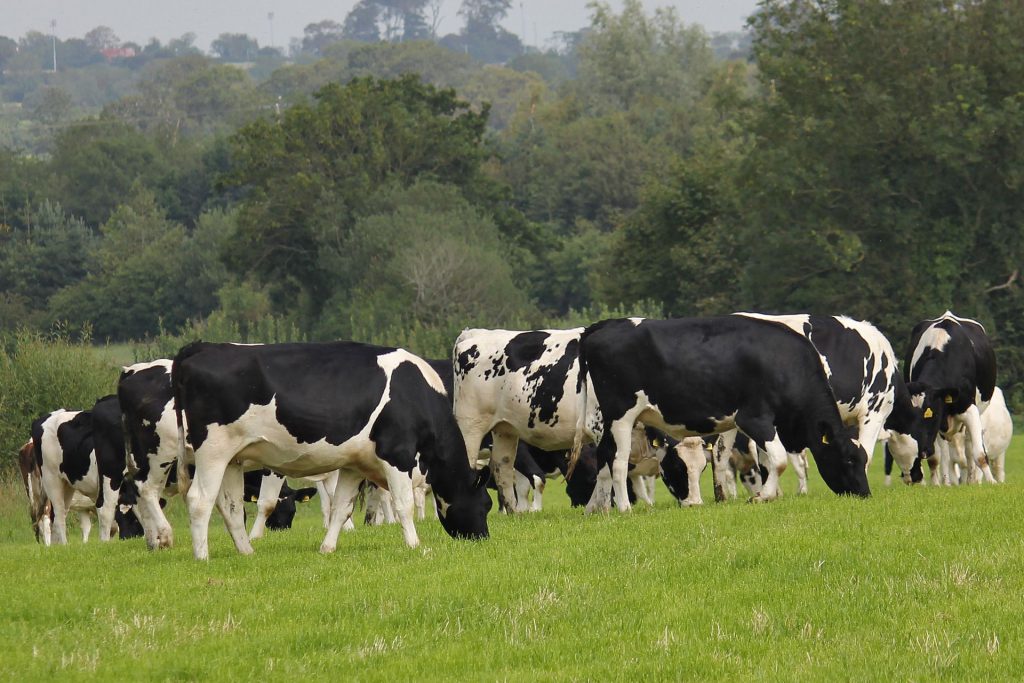Increased focus on improving beef traits from the dairy herd has led to a key breeding recommendation to only generate enough dairy replacements to meet your herd’s requirements.
But how many replacement heifers are required on your farm? Joe Kelleher a dairy advisor with Teagasc explains:
”Over the past few years there has been an increased focus on improving the beef traits of the non-replacement calves produced from the national dairy herd.
”The key recommendations include using sexed semen, using more beef artificial insemination (AI), using the dairy beef index to choose bulls, and only generating enough heifers to meet your replacement requirements.
”But how many replacement heifers are required on your farm?”
Factors affecting the replacements required
There are numerous factors that will determine the number of replacements required on dairy farms;
- Fertility status of the herd;
- Age profile;
- Disease status;
- Calving spread;
- Expanding herd or static;
- Farmers’ own desire to improve the genetics of their herd.
Having assessed all of these factors, every farmer should have an idea of the number of heifer calves they wish to see on the ground in spring 2020.
Calculating the dairy replacements for 100-cow herd
Kelleher explained: ”When you know the number of heifer calves you want, you can then start to plan how many cows you need to serve to dairy sires.
”The starting point for this exercise is to enter the number of heifers you want in the parlour in spring 2024.”
Number required Heifers entering the parlour spring 2024 20 Heifers that calve in spring 2024 21 Heifers bred at 15 months (May 2023) 22 Heifers calves born in spring 2022 23 Bred calves born in spring 2022 (bulls and heifers) 47 Cows/heifers bred to dairy sires 96
Kelleher continued: ”To achieve 20 heifers successfully standing in the parlour in 2024, this farmer has decided that they need to calve down 21 heifers to allow for the one heifer that may calve down with blind quarters or may meet some other fate at calving.
”To calve down 21 heifers, they decide that they need to breed 22 heifers to allow for the one that won’t go in-calf, and to have 22 heifers for breeding they decided they needed 23 dairy-bred heifer calves born to allow for the one that might die at birth.
”Nationally, 49% of the calves that are born are heifers versus 51% bull calves, although there can be big variations between farms,” he added.
”In this situation, we will allow for a slightly higher bull-to-heifer ratio, which means this farmer needs to target putting 96 cows in-calf to dairy bulls.
”This works out at just shy of five straws/natural serves to get one calf on the ground.”
Fertile herds may get away with 4.5 straws whereas infertile herds may have to use 5.5 straws/serves to achieve an adequate number of replacements.
”Sexed semen can be used to reduce this figure, but as many [farmers] are now two to three weeks into the breeding season, the window for using sexed semen now has probably passed.”

Herd Fertility
Kelleher explained that: ”Fertile herds that only use dairy sires on the cows (and run a beef bull with the heifers), will need to use dairy sires for a minimum of four weeks on all cows to achieve the above figures.”
Where herd fertility is poor, this may need to be extended to six weeks.
”Herds that breed both heifers and cows to dairy sires have the choice of either reducing the length of the breeding season, or by being selective on which cows they choose to breed (only if using AI) to dairy sires, leaving the option of using high beef merit sires on cows you would rather not breed a replacement from,” he added.
”From a national perspective, improving the quality of the beef produced from the dairy herd is important, but so is producing an adequate number of dairy replacements.”
Kelleher concluded by stating: ”It is important to get the balance right on your farm. Do a few quick sums and work out when you can afford to switch to beef sires.”
